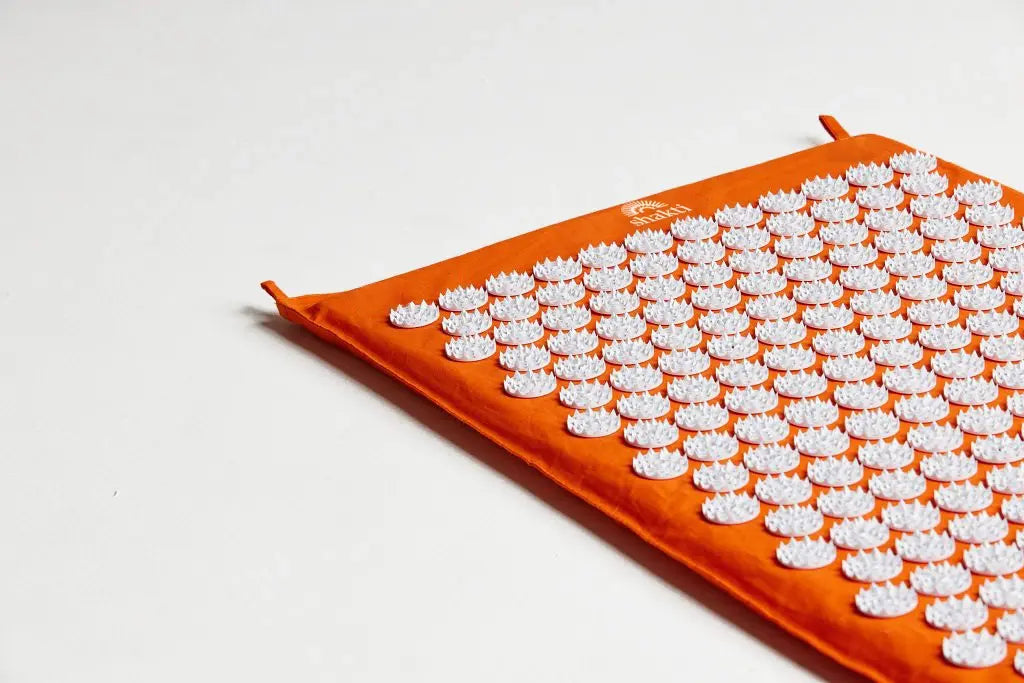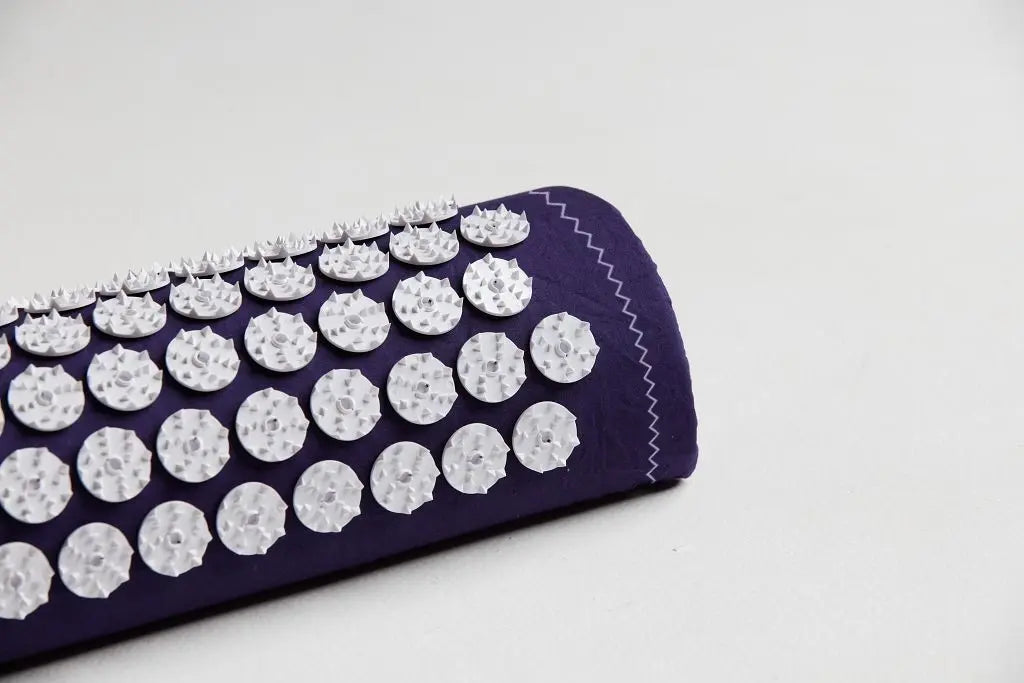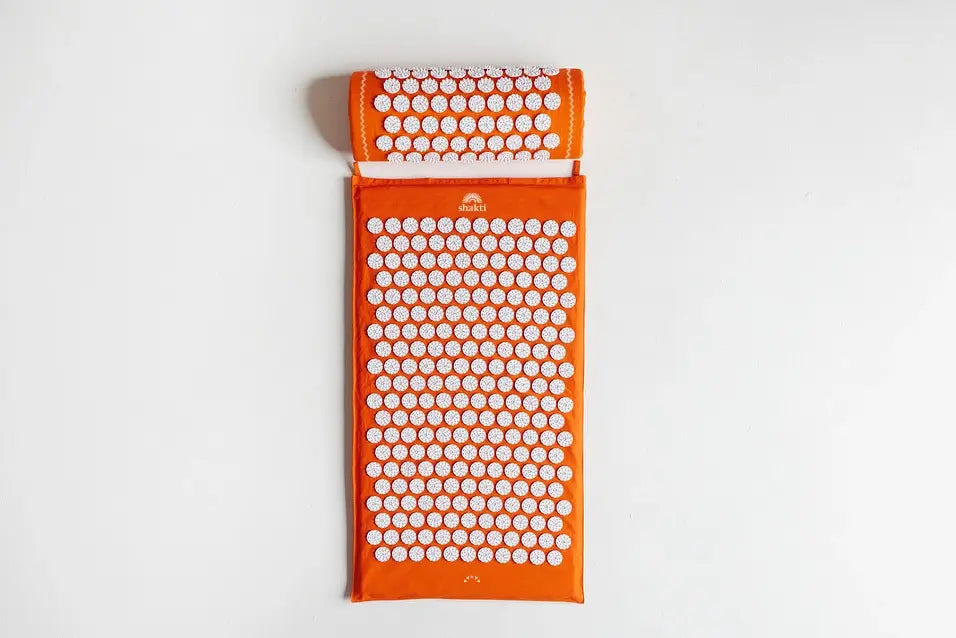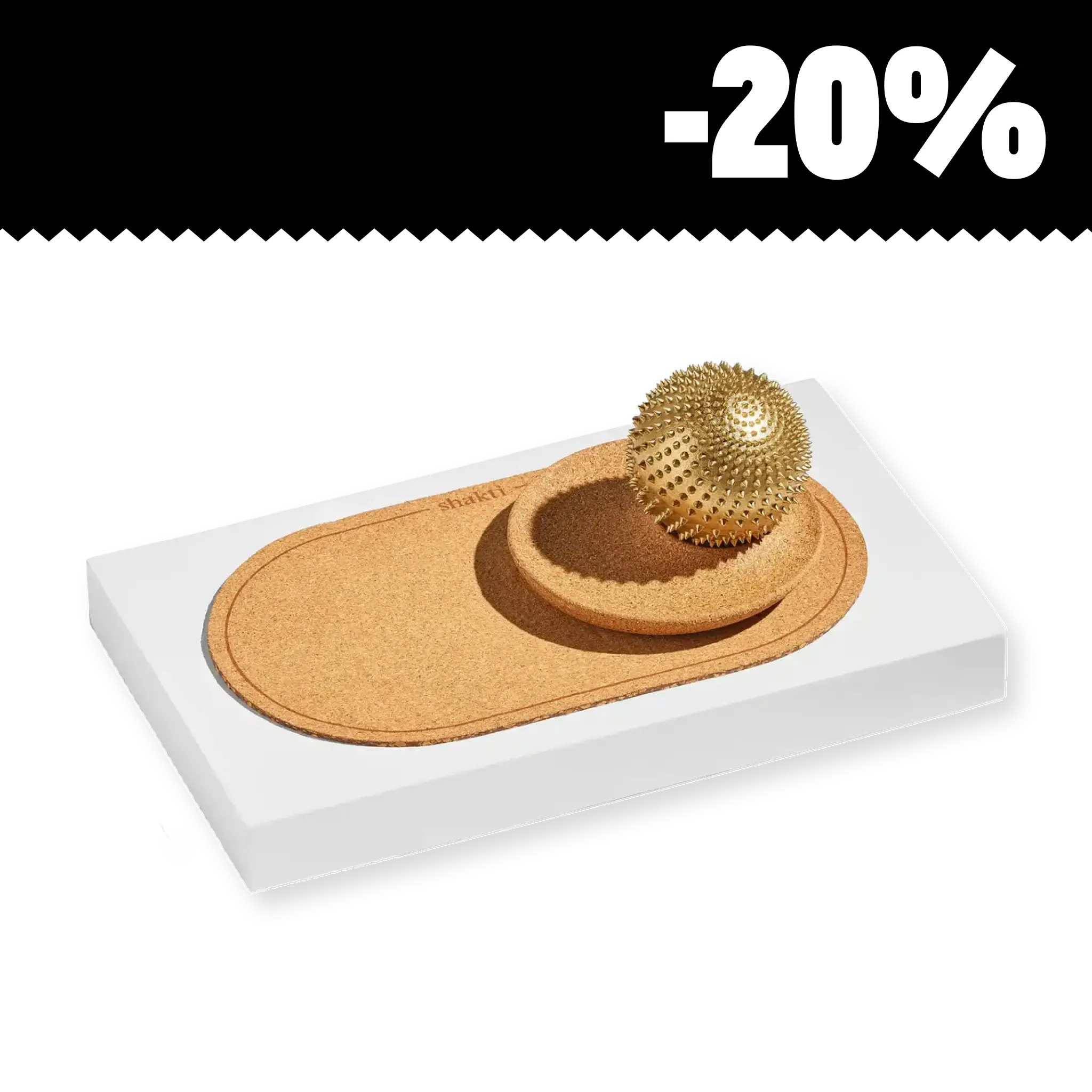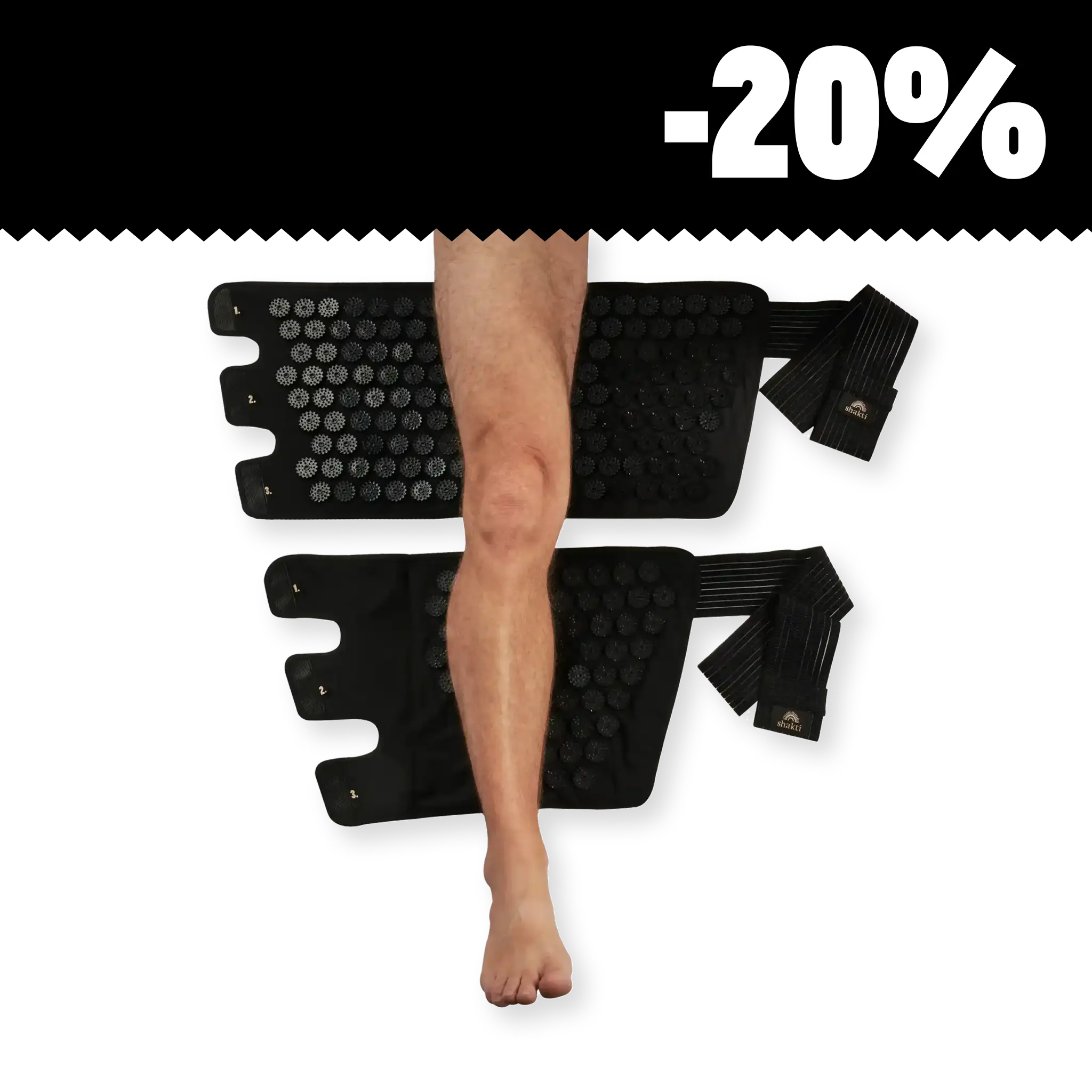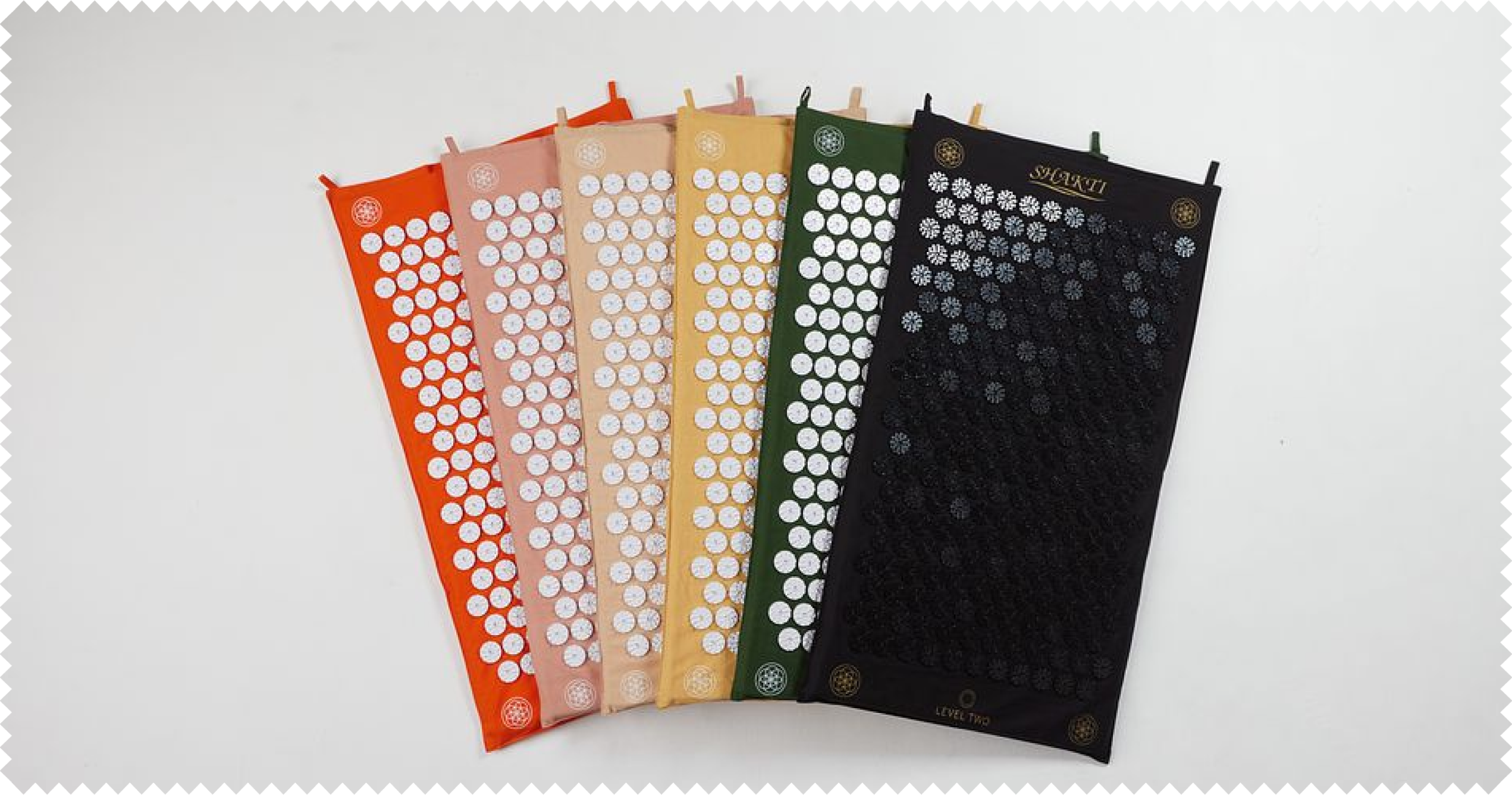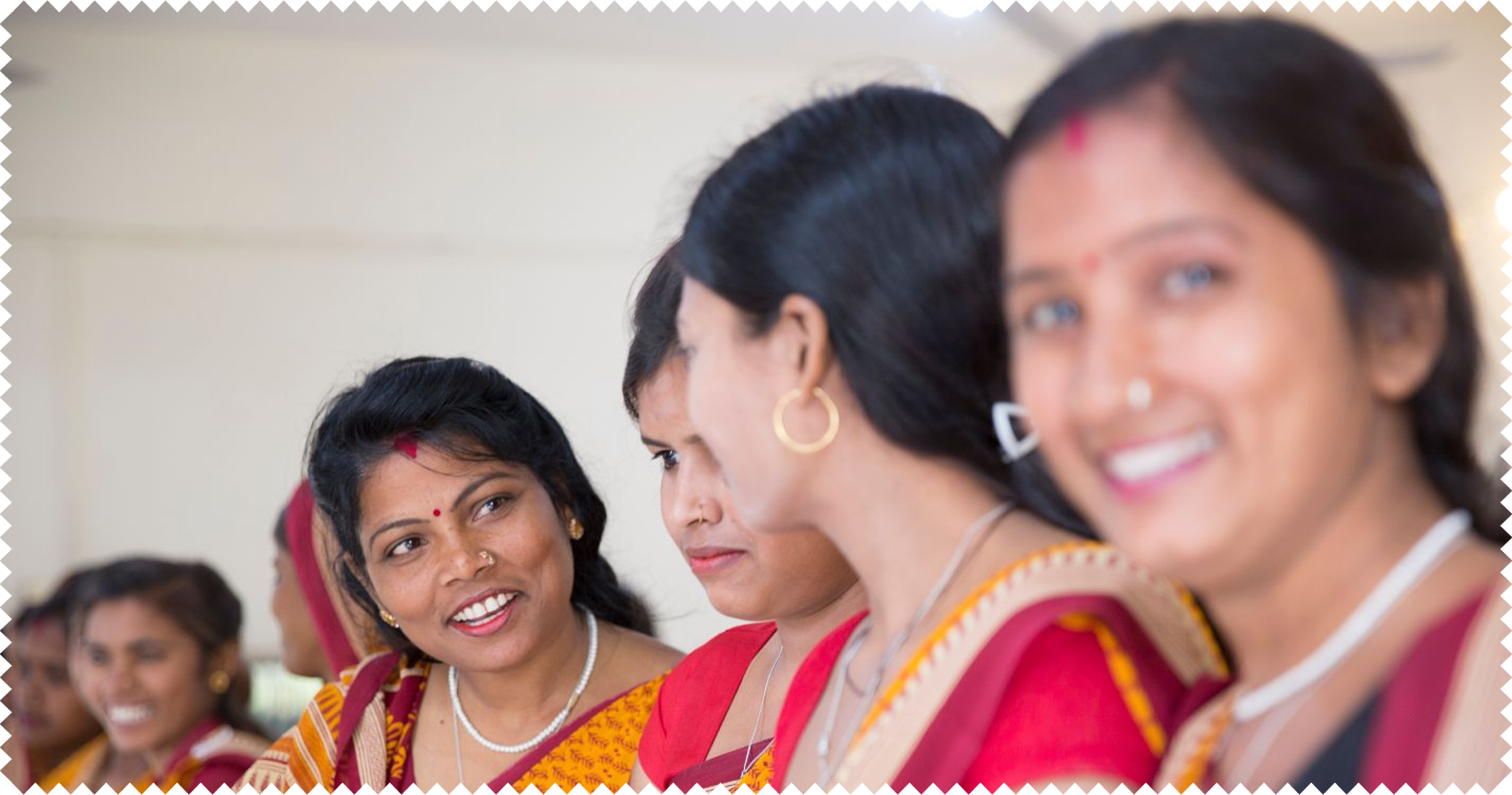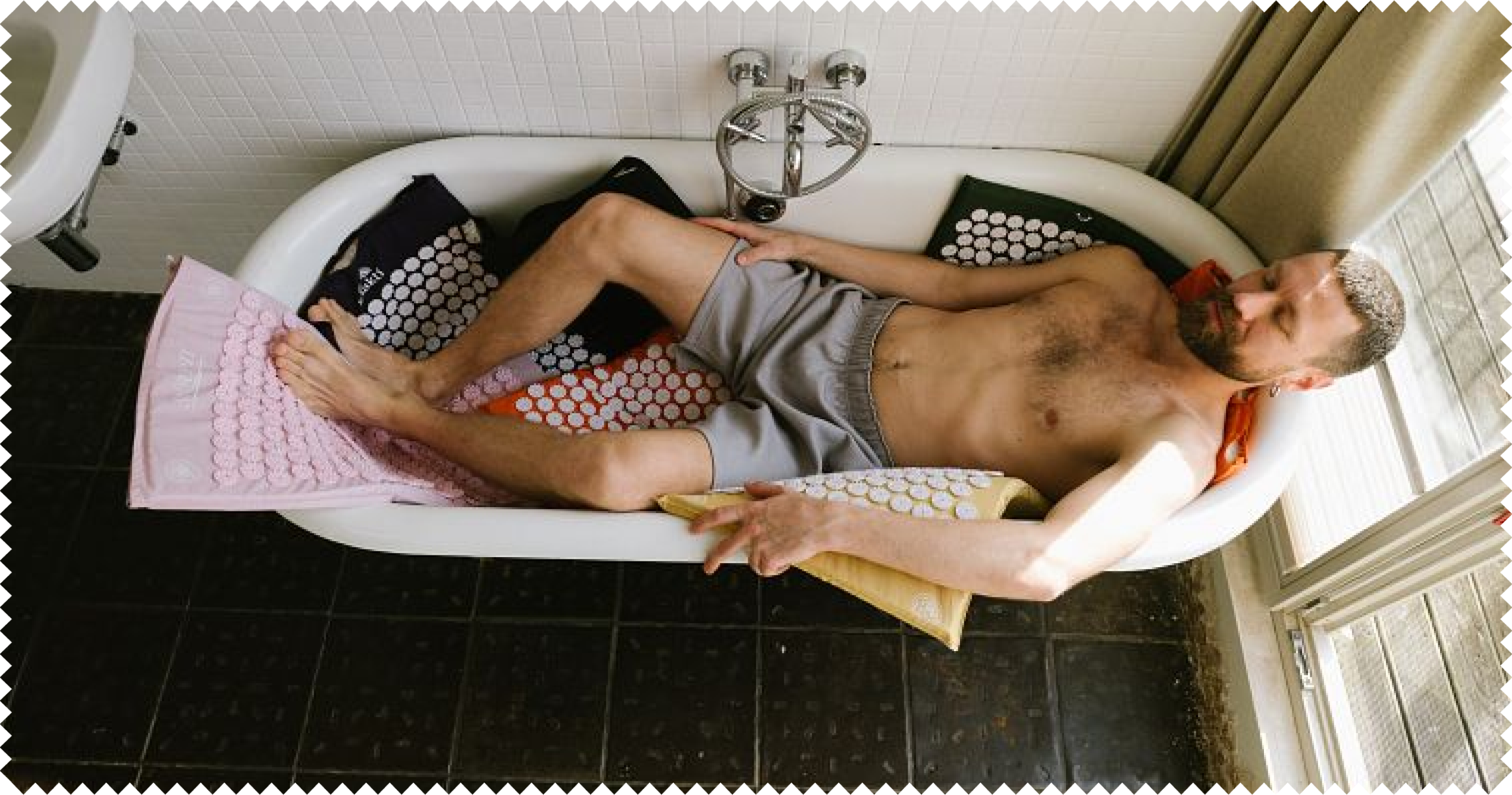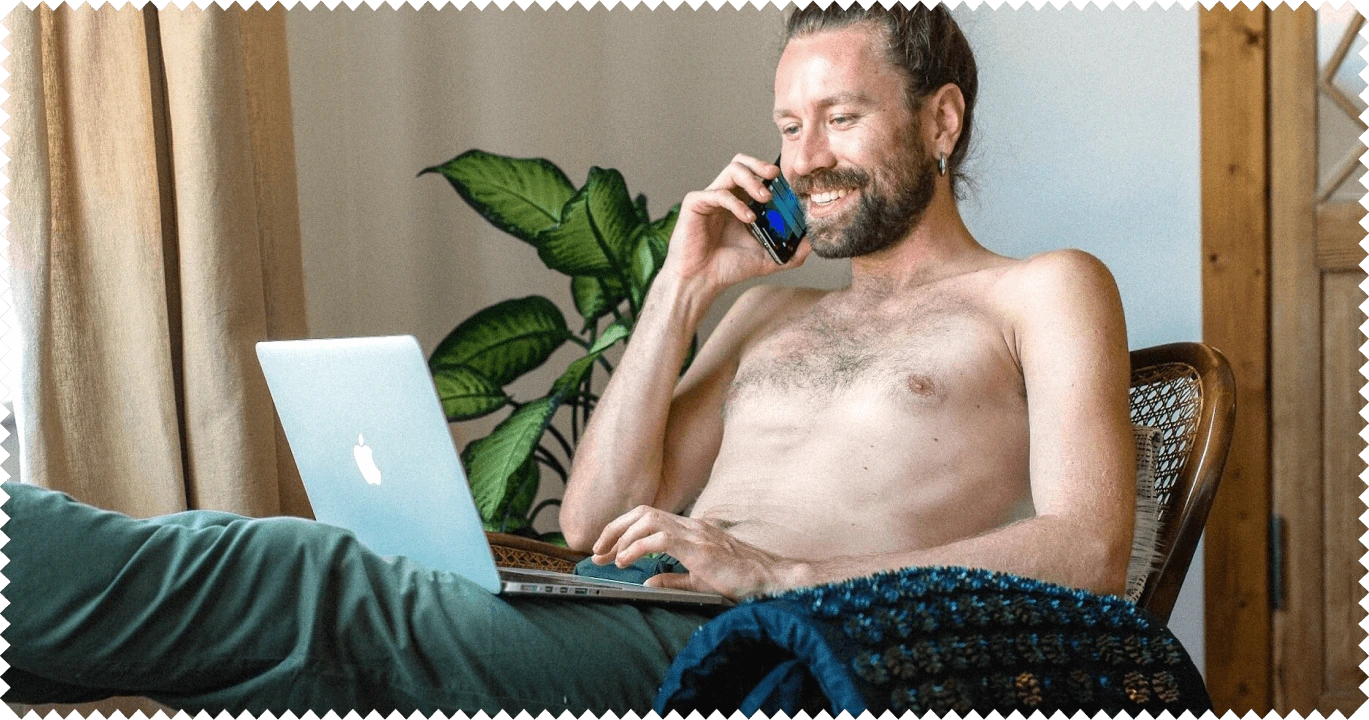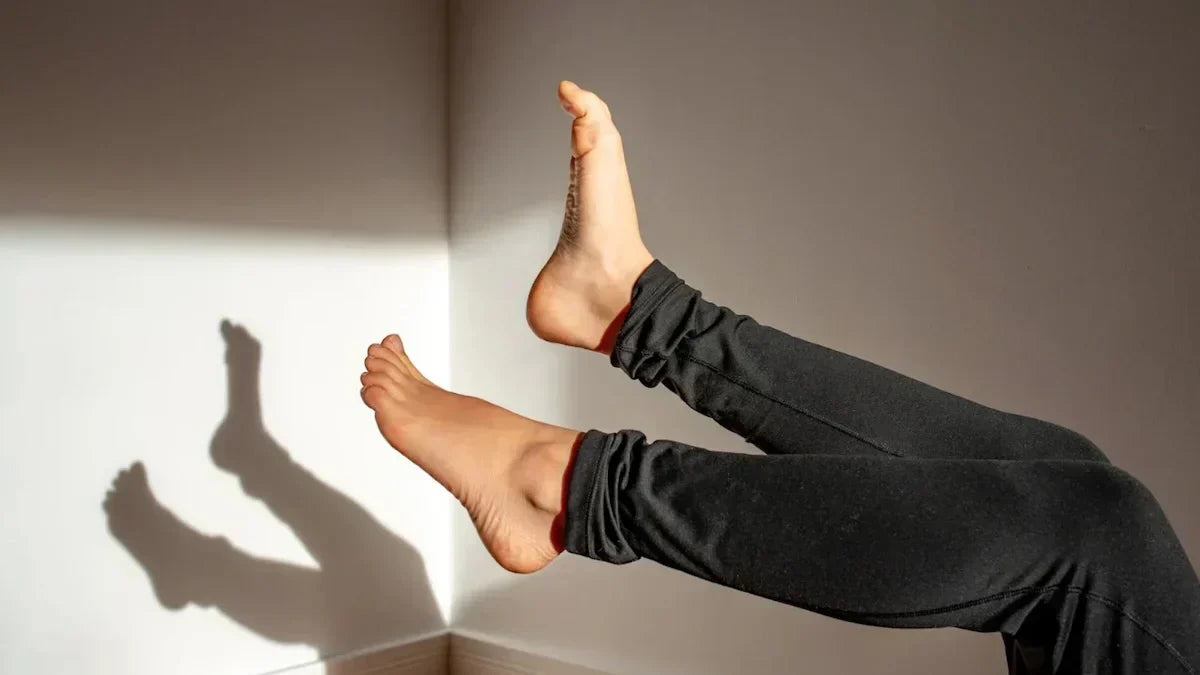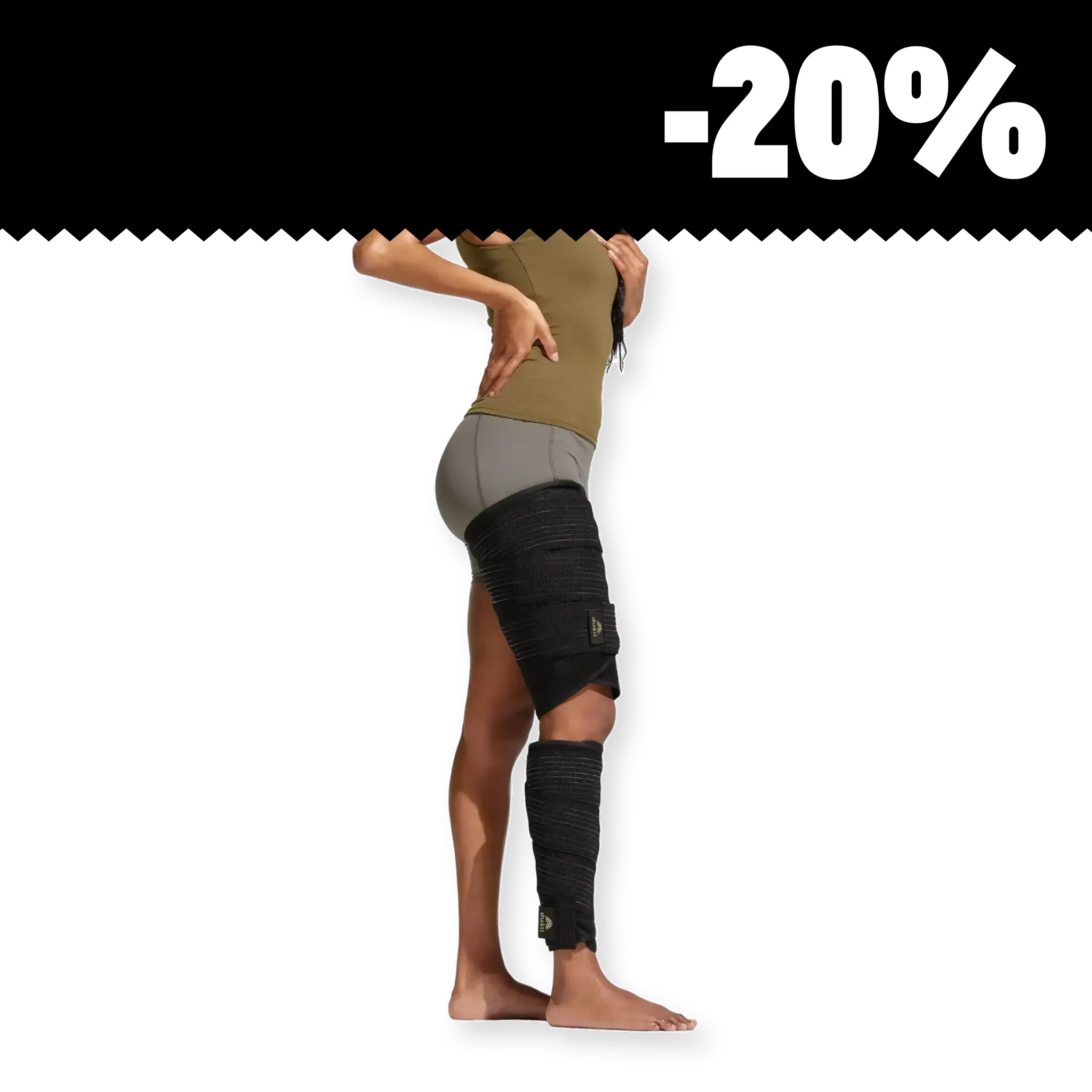Relieve Restless Legs Syndrome with Acupressure: When the legs do not want to rest
If your legs always seem to be saying "please, move me - right now!" and your body never really comes to rest, then restless legs syndrome is often a major cause. But what is behind this lesser-known syndrome, also known as Willis-Ekbom disease? To give you an insight into the condition, we have not only put together an overview of RLS, as the syndrome is abbreviated, but have also received support from Tanja from our acupressure community on Facebook .
Tanja is herself affected by restless legs syndrome and talks openly with you in the article about her symptoms and reveals how the Shakti Mat acupressure mat has helped her.
What is Restless Legs Syndrome?
Restless legs syndrome is the term used to describe an uncomfortable feeling in the legs that is accompanied by a constant urge to move. The symptoms are particularly noticeable in the afternoon and evening - especially when the body enters a rest phase. Unfortunately, RLS also often makes for a very uncomfortable journey when sitting for long periods, for example in a car, train or plane on the way to a vacation.
In many cases, it is unclear why the syndrome occurs in a person, much to the chagrin of those affected. Only in some cases are iron deficiency, extreme lack of sleep, too much alcohol, nicotine or caffeine the trigger. Then the RLS occurs only temporarily. Sensations similar to RLS also occur in the last of the pregnancy trimesters, but they usually disappear a few weeks after birth.
Because Restless Legs Syndrome occurs during rest and people who suffer from it sometimes can't describe it well in their own words at first, it is often misidentified as a sleep disorder.
Usually both legs are affected by the syndrome, but it can also extend to the arms or chest, or affect only one leg. What is common to all parts of the body that are affected is always the overpowering urge to move. Often pain, a pulsating feeling and other unpleasant sensations of restlessness are added, which are often difficult to describe.

Tanja has put into words for you how she feels as an RLS sufferer and how she found out that she suffers from the disorder.
Dear Tanja, can you tell people who don't know Restless Legs Syndrome how it feels?
RLS is the colloquial term for restless legs. Whether I sit on the sofa in the evening and want to rest or lie down in bed to sleep, my legs don't want to. 😕 It's a feeling of pain, sometimes in the whole leg, sometimes just in the thighs or calves. But always there is this urge to move. I then get up, change my sitting position or walk around the apartment for another hour. If I don't do that, the pain becomes more and more and there are uncontrolled twitches of the legs. If I lie down in bed to sleep and don't fall asleep within two minutes, I have to get up again and walk until I can't keep my eyes open anymore because of fatigue. The next day I'm exhausted because I don't get enough sleep.
How did you find out you had restless legs syndrome?
I have had problems with my legs for years. That is, when I started to get tired or drove too long, my legs started to hurt. When I started having restlessness at night, I went to the doctor and he diagnosed me with Restless Legs. I didn't want to take any medication for it yet.
Tanja came across Shakti Mat because she wanted to try out other alternatives instead of taking medication, and she also gave us a few details about this:
How did you get to know the Shakti Mat and what do you particularly like about it?
I noticed Shakti Mat through Facebook. I always saw advertisements there. At some point I really got to grips with the advertising, read the comments and the helpful reports about what this mat is capable of.
After thinking about it for two weeks, I bought the orange mat with the Pillow . When it arrived it was like, "Oh dear, what have you done?" 😂Thenext evening I was brave enough to lie on it for 10 minutes. The night was better than it had been for a long time. I slept like a baby and, above all, pain-free!
I've been using it ever since, sometimes every day, but at least every two days. I vary them. Sometimes just the lower back with the sacrum and the sacroiliac joint, sometimes just the legs and always the entire back at the end. I have really come to love the Shakti Mat. It is so versatile to use. It helps me immensely.
Acupressure for Restless Legs Syndrome and other helpful exercises
Since RLS is relieved primarily by movement throughout the body system, we've brought you some helpful acupressure points as well as a few movement exercises that sufferers often find helpful. If you suffer from RLS, don't forget to listen to your body - it doesn't matter if you get exhausted after just one exercise. Take the time you need and try again another time. If you are unsure if the acupressure points and exercises are right for you, talk to your doctor about it at your next visit.
Before we get started with the exercises, let's hear from our dear Tanja once again. She has already tried out a few things before the Shakti Mat that she would like to share with you:
What exercises or home remedies do you find helpful to live better with RLS?

At the beginning, of course, I found out what I could do apart from taking medication. As I already have several chronic illnesses, I already take enough of them. But there isn't really anything you can do apart from exercise and relaxation. I did progressive muscle relaxation according to Jacobsen for years and it was good for me, but at some point it wasn't enough. And exercise - we have two dogs - didn't really work any more either.
When the Shakti Mat finally came and with it sleep, Tanja decided to tell us all about her journey and thus accompany this article, as you can read above, from the perspective of someone affected. We would like to thank Tanja very much for this! And now let's get started with the little workout for restless legs syndrome.
Exercise 1: Good night RLS - a movement sequence in three steps
Step loosely onto the Shakti Mat with both feet. The feet do not touch each other. It is important that you can stand in a relaxed position. So feel free to use a towel or wear thick socks to make standing on the mat more comfortable.
Now clasp your hands together (as in the picture) and stretch them above your head as if you wanted to make yourself very tall. Your head should be right between your arms.

Now, in this posture, begin to circle the hips in small movements 15 times to the left and then 15 times to the right - it is important that your feet remain firmly on the mat.
In the second step, bend down towards your feet with your hands interlocked and breathe deeply. The palms of your hands point towards the Shakti mat. If this posture is comfortable for you, start to stretch alternately to the left and right three times without lifting your feet.

Then slowly straighten up and take two more deep breaths before leaving the mat.
Exercise 2: Mi 9 and B40 - two acupressure points around the knee
The Mi 9 acupressure point is located on the inside of the leg. There is a bony protrusion on the inside of the knee, under which the point is located. Press it evenly, but not too hard. It should not feel too painful, more like a pulling sensation.

With the other hand, you can press point B 40, which is located exactly in the hollow of the knee. Depending on how you feel, you can apply a little more pressure here.

Exercise 3: broomstick and chair
Sit on a chair and place a broomstick in front of you. Grasp the broomstick with your toes and hold it firmly if you can. If you cramp easily while holding it, just rest your toes on the handle. Now slowly move your knees to the left and right twelve times each, holding the stick firmly with your toes.

We hope that Tanja and we could encourage you to try some exercises. If you suffer from Restless Legs Syndrome, you can be sure that you are not alone. Link up with other sufferers and share with them what has helped you. We wish you strength and success in dealing with your condition.
If you would like to share or ask questions about Restless Legs Syndrome, acupressure and acupressure mat, feel free to leave us a comment or visit us on Facebook.
If you would like to discuss the topics of acupressure and acupressure mats, visit our closed Facebook group.
Sources for this article:
Dr. Kenyon, Julian: Acupressure Techniques. A self-help guide. Thorsons, London 1987. p. 201.
Dr. Verma, Vinod: The Ayurveda Beauty Book. The Indian healing knowledge about beauty from within for women and men. Nymphenburger 2003. p. 136 ff.
Reed Gach, Michael: Healing Points. Acupressure for the self-treatment of diseases. Knaur, Munich 1992. p. 92
Schwind, Peter: Fascia. Tissue of life. 2nd edition, Irisiana, Munich 2015 p. 112 ff.
https://www.ninds.nih.gov/Disorders/Patient-Caregiver-Education/Fact-Sheets/Restless-Legs-Syndrome-Fact-Sheet (access 28.12.2019)



